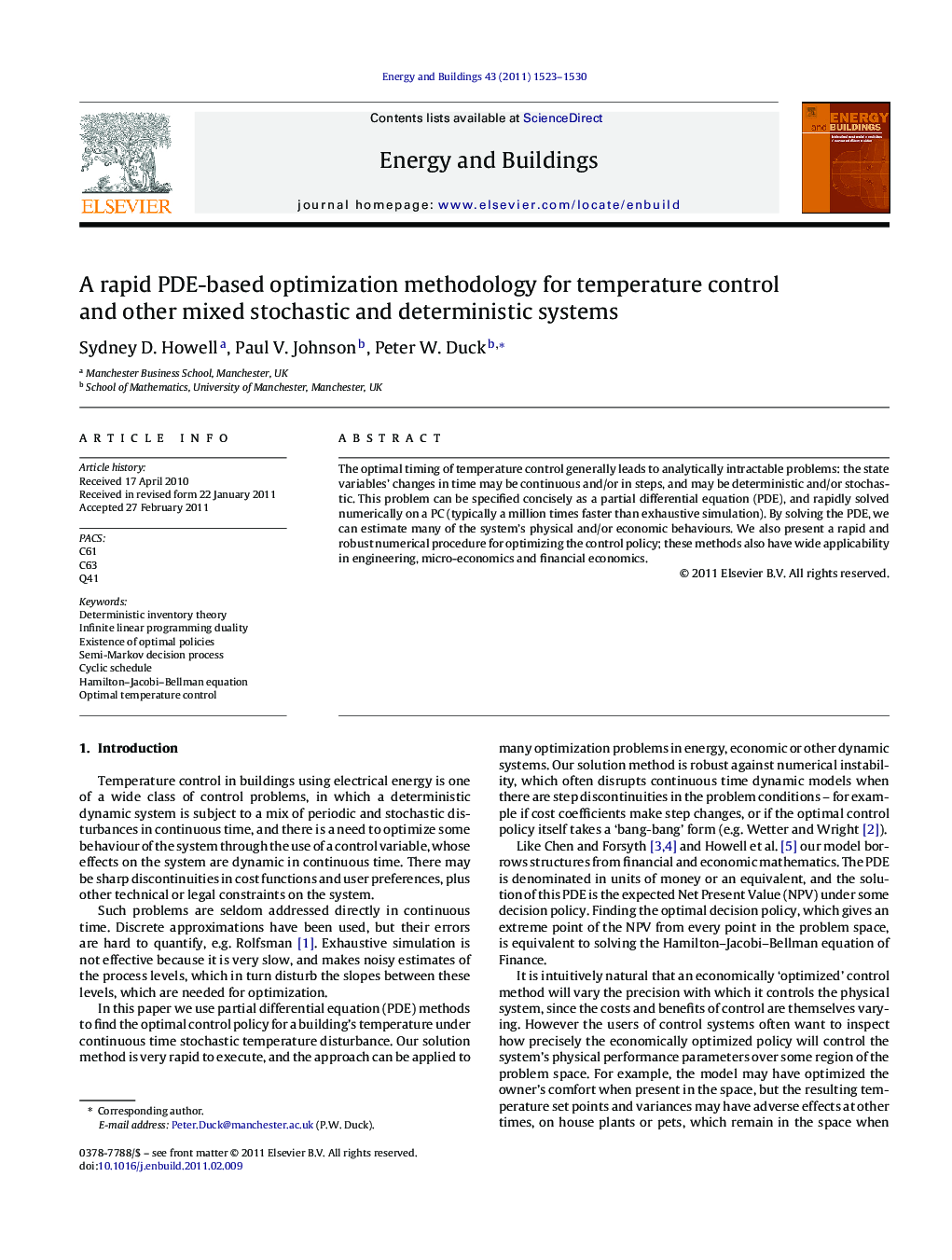| Article ID | Journal | Published Year | Pages | File Type |
|---|---|---|---|---|
| 264506 | Energy and Buildings | 2011 | 8 Pages |
The optimal timing of temperature control generally leads to analytically intractable problems: the state variables’ changes in time may be continuous and/or in steps, and may be deterministic and/or stochastic. This problem can be specified concisely as a partial differential equation (PDE), and rapidly solved numerically on a PC (typically a million times faster than exhaustive simulation). By solving the PDE, we can estimate many of the system’s physical and/or economic behaviours. We also present a rapid and robust numerical procedure for optimizing the control policy; these methods also have wide applicability in engineering, micro-economics and financial economics.
► Continuous stochastic-dynamic systems like heat control can be rapidly optimised. ► Methods based on Financial Maths can tolerate step functions in constraints and payoffs. ► Physical error rates can be inspected after an economic optimum is achieved.
